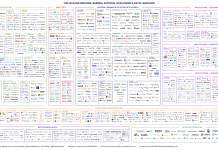To call Dr Mikael Adlers ”Q” is correct in so many ways. Just as his namesake at MI6’s Q-branch develops ingenious tools that help James Bond fight bad guys, Mikael Adlers and his team develop tools that will help Qvantum customers fight climate change
The office spaces where Mikael Adlers work in the university town of Linköping in Sweden are almost conspicuous in how inconspicuous they look. A small Q on the door is all. But then, this is the city where Sweden’s unique military aircraft have been developed ever since the 1940s, and some of the members of Qvantums’ very own Q-branch actually have a background in that industry.
Mikael Adler’s team is small, but dedicated to one specific mission: To design and create software that makes it so easy to use Qvantum products that anyone can do it intuitively. Mikael worked for a number of years at Apple headquarters in Cupertino, responsible for parts of the map software.
“One thing I learned at Apple is that the user is the only one who can tell if a software is good or bad. If the user doesn’t understand how to use it, doesn’t want to use it, or doesn’t find the solutions that we have built into it, the software just isn’t good enough.”
“I would say that most industries are quite bad at this. A bunch of engineers create a bunch of functions, and then they ask a designer to make them look nice. We have a designer on board from day one. Ease of use and how it feels to use it is everything!”
Mikael tells a story of how a senior officer at Apple who was in charge of more than a thousand engineers was still the one person who made design decisions.
“He would say “why is that button red?” or “Are you sure my grandmother will be able to figure out how to use this?.”
Software development has been an integral part of all R&D at Qvantum since the “new start” in 2021. And Mikael Adlers has been in charge of it ever since. There are currently four different software being developed; System Design, Installation, Building Management, and User. All are managed as cloud solutions with full backup and up-time guarantees from Qvantum’s servers.
From geology to shopping list
“Creating a heating system design tool is about picking the brains of our system designers and making all their knowledge accessible in a digital format, and I feel that we have come very close to that.”
The tool can be used for designing systems from single houses to several thousand. It considers everything from local geology and climate to the thermal inertia of buildings. The designer also enters information about where excess heat or cold can be harvested and what materials are used in buildings. “At the end, you basically get a design and a shopping list.”
Installation tools that make work easier and fun
James Bond rarely gets any time to try out the new gadgets that Q provides him, but he can still use them perfectly the first time. Mikael Adlers wants it to be the same way for installers.
“We know that heat pumps are new to many, and that many will be installed by people who might have spent years installing gas burners. Our software should be there for them. I envision a screen that starts by saying, “Hi, Mikael. Should we get started?” Then, it leads the installer through the process without complicated language or codes. It should feel fun, actually.”
Property owners
The ones that have the most benefit both from the heating systems and the software are, of course, the property owners.
“We might have 1,000 heat pumps in one development”, Mikael says. “Our system monitors them all and uses every built-in sensor to gather information that can save money and energy. A single unit can foresee a coming problem and request service before it happens. The software can also, for example, notice that the sun that shines on the south side of a building will create heat that will keep the building warm for hours. That could mean that the starting of the heat pumps in that part of the building can be delayed until power is cheaper later in the day. Balancing power within developments will be crucial for all real estate owners.”
According to Mikael, the big issue is not filling software with bells and whistles but making sure the functions present themselves when needed.
“Just because something CAN be done doesn’t mean that it SHOULD be done.”
End users of all kinds
At the far end of the chain is the end-user software, and this might present the biggest challenge. “The other software we design will be used by people who have some understanding of the kind of systems we work with. With end users, we must, however, assume that there is no knowledge whatsoever. So when they open their app, everything must be totally clear. A bit like when Bond picks up his shooting pen or exploding watch – it just has to be obvious.”
Mikael looks at the Aston Martin that we borrowed for the photo shoot.
“Well – at least at our Q-branch, we don’t have to worry about agents smashing up beautiful cars.”

This work is licensed under Creative Commons Attribution-NonCommercial-NoDerivatives 4.0 International.











